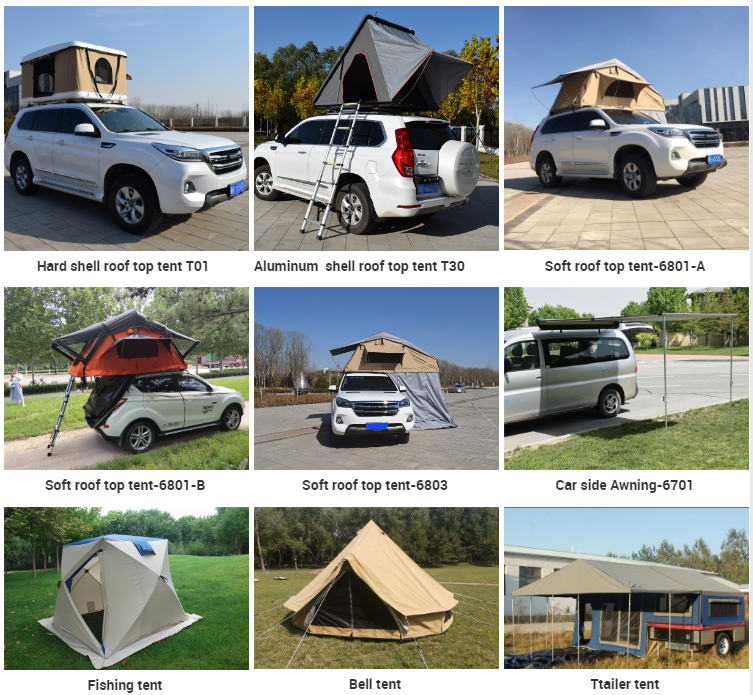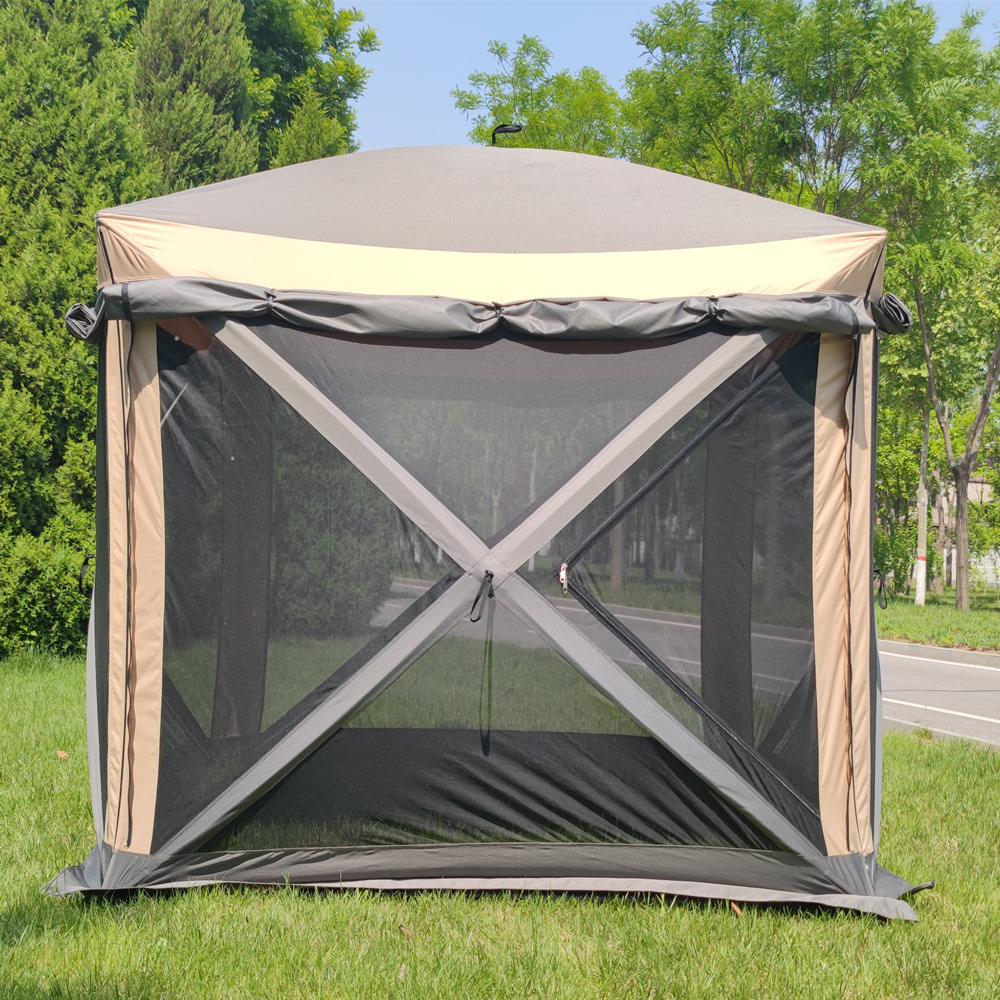Many friends confuse outdoor tents with camping tents, but they are quite different in life. As a tent supplier, let me help you analyze their differences:
outdoor tent
1. Fabric
The technical indicators of waterproof fabrics are subject to the degree of waterproofing
Water repellants are only available in AC or PU. Generally only for children or gaming accounts.
Waterproof 300MM is generally used for beach tents/shade tents or cotton tents that are resistant to drought and less rain.
Waterproof 800MM-1200MM for regular simple camping tents.
Waterproof 1500MM-2000MM is used to compare mid-range tents, suitable for multi-day travel.
The waterproof tents above 3000MM are generally professional tents, which have been treated with high temperature/cold resistance technology.
Bottom material: PE is generally the most common, and the quality mainly depends on its thickness and warp and weft density. It is best to choose high-grade Oxford cloth, and the waterproof treatment should be at least 1500MM or more.
Inner fabric: generally breathable nylon or breathable cotton. Mass depends mainly on its density
2. Supporting skeleton: the most common is glass fiber tube. Measuring its quality is more professional and more important.
3. Features: Outdoor tents belong to collective equipment, belonging to people who often participate in outdoor activities and often have actual needs for use. Newcomers can participate in some activities and purchase according to their own needs after having a certain experience. The purchase of tents mainly depends on the use, consider its design, material, wind resistance, and then consider the capacity and weight. Ordinary camping tents are mostly yurt-style tents with 2-3 carbon fiber tent poles, which have good rainproof performance and certain windproof performance, and have good air permeability. Four-season tents or alpine tents are mostly tunnel tents, with more than 3 aluminum alloy tent poles, and a variety of auxiliary designs such as ground nails and windproof ropes. The materials are sturdy and durable. But many alpine tents are not rainproof and are often too heavy for weekend camping.

camping tent
1. Classification of camping tents: From a structural point of view, camping tents mainly include triangles, domes and houses. According to the structure, it is divided into single-layer structure, double-layer structure and composite structure, and according to the size of space, it is divided into two-person, three-person, and multi-person types. Triangular camping tents are mostly double-layered structures with complex support, good wind resistance, heat preservation and rain resistance, and are suitable for mountaineering adventures. The dome-shaped camping tent is easy to build, easy to carry, light in weight and suitable for general leisure travel.
In terms of categories, camping tents mainly include: vertical camping tents. Compared to a typical stand-up tent, it is lighter and quicker to set up. The product has high stability, strong shear wind guide, no rain, and is compact and convenient after folding. Easy to carry and so on. And it has the characteristics of high strength, good stability, small volume after folding, convenient transportation and so on.
2. Attention when purchasing camping tents: General outings are based on the principles of lightness, easy support and low price, mainly dome-shaped, weighing about 2 kg, and mostly single-layer. Its waterproof, windproof, warmth and other properties are secondary, and it is suitable for small family travel.
3. Camping tent features:
Mountain travel must first have a certain degree of waterproof, rainproof, windproof and warm performance, followed by price. Issues with brightness and support. Mainly with double-layer triangle, weight 3-5 kg, suitable for all kinds of camping and four seasons travel.
There are other types of tents to suit the needs and use of various environments. Fishing tent, semi-reunion type, for shade and temporary rest. Awnings, shade tools for general travel.
4. When setting up tents in the wild, if you are not familiar with the method of setting up tents or the parts are insufficient, you will not be able to enjoy the wild life. So before the event, practice the method at home and check that the parts are sufficient. Better to bring a few more. Except for the big house-shaped tents, most tents can be set up by themselves. After practice, apply a waterproofing agent to the outer layer of the tent to prevent rainwater from seeping in.
Post time: May-18-2022

